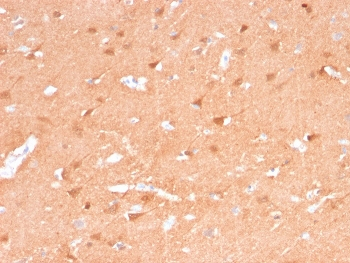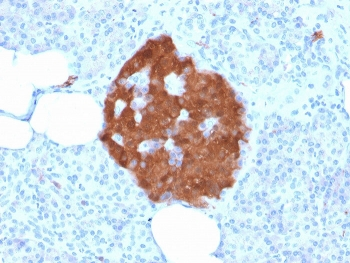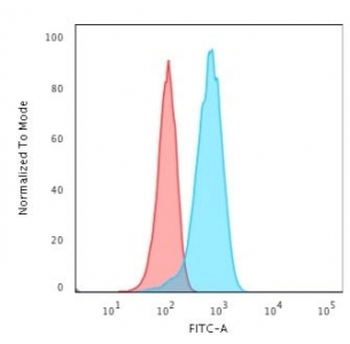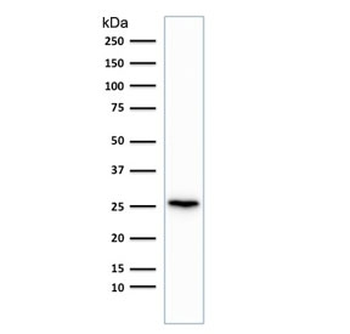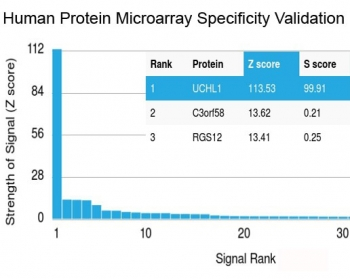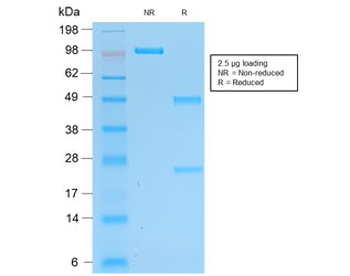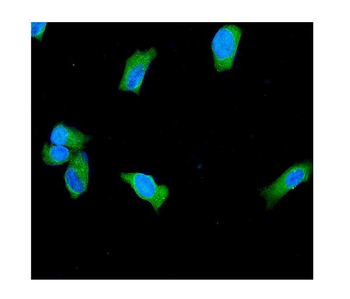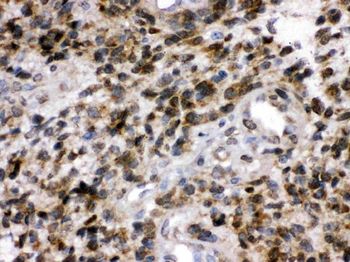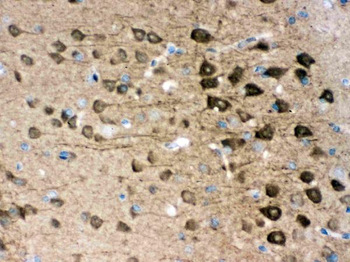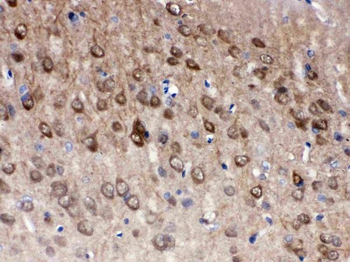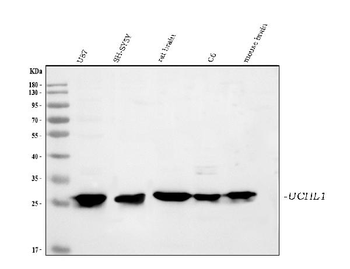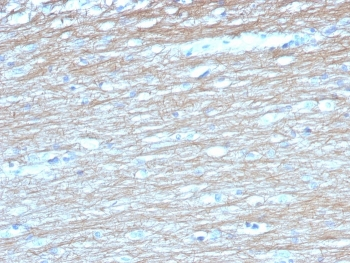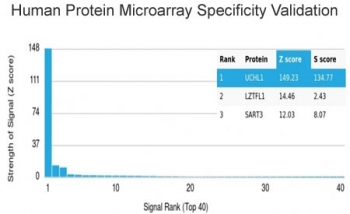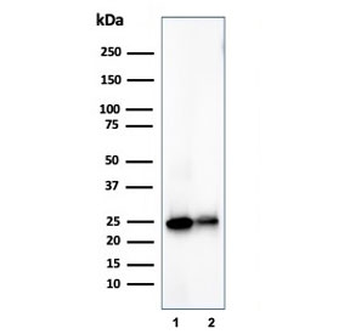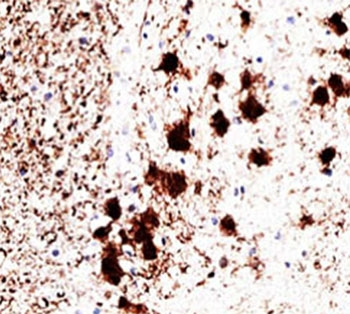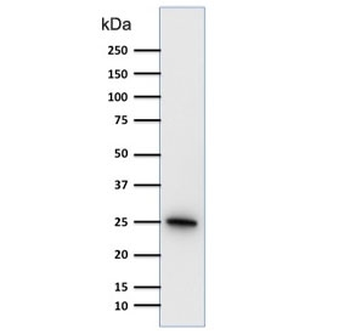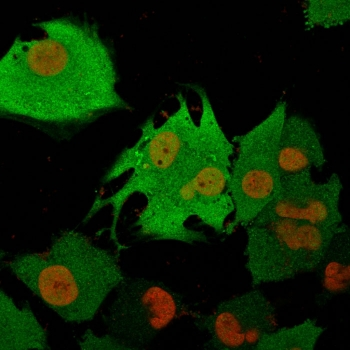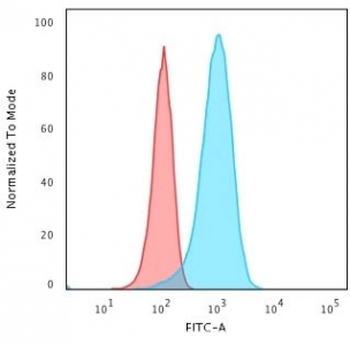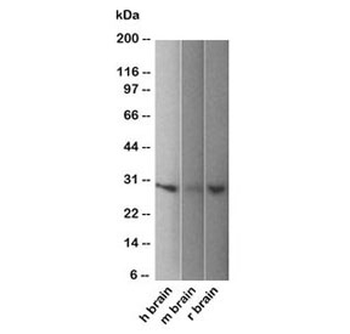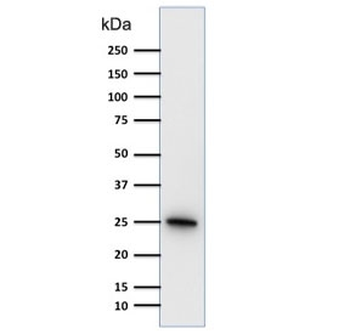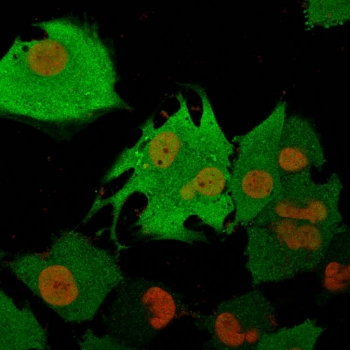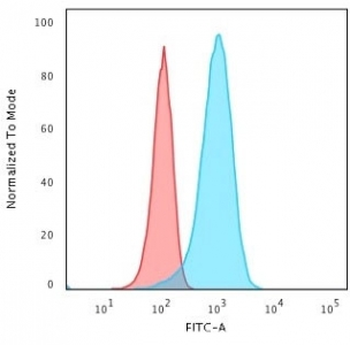You have no items in your shopping cart.
PGP9.5 / UchL1 Antibody
Catalog Number: orb606485
| Catalog Number | orb606485 |
|---|---|
| Category | Antibodies |
| Description | This mAb reacts with a protein of 20-30kDa, identified as PGP9.5, also known as ubiquitin carboxyl-terminal hydrolase-1 (UchL1). Initially, PGP9.5 expression in normal tissues was reported in neurons and neuroendocrine cells but later it was found in distal renal tubular epithelium, spermatogonia, Leydig cells, oocytes, melanocytes, prostatic secretory epithelium, ejaculatory duct cells, epididymis, mammary epithelial cells, Merkel cells, and dermal fibroblasts. Furthermore, immunostaining for PGP9.5 has been shown in a wide variety of mesenchymal neoplasms as well. A mutation in PGP9.5 gene is believed to cause a form of Parkinson's disease. |
| Species/Host | Mouse |
| Clonality | Recombinant |
| Clone Number | rUCHL1/775 |
| Tested applications | FACS, IF, IHC-P, WB |
| Reactivity | Human, Rat |
| Isotype | Mouse IgG1, kappa |
| Immunogen | Recombinant human protein was used as the immunogen for the recombinant PGP9.5 antibody. |
| Dilution range | Western blot: 1-2ug/ml,Flow cytometry: 1-2ug/million cells,Immunofluorescence: 1-2ug/ml,Immunohistochemistry (FFPE): 1-2ug/ml for 30 min at RT |
| Purity | Protein G affinity chromatography |
| Conjugation | Unconjugated |
| Formula | 0.2 mg/ml in 1X PBS with 0.1 mg/ml BSA (US sourced) and 0.05% sodium azide |
| Hazard Information | This recombinant PGP9.5 antibody is available for research use only. |
| UniProt ID | P09936 |
| Storage | Store the recombinant PGP9.5 antibody at 2-8°C (with azide) or aliquot and store at -20°C or colder (without azide). |
| Buffer/Preservatives | 0.2 mg/ml in 1X PBS with 0.1 mg/ml rAlbumin (US sourced) and 0.05% sodium azide |
| Note | For research use only |
| Application notes | Optimal dilution of the recombinant PGP9.5 antibody should be determined by the researcher.1. The prediluted format is supplied in a dropper bottle and is optimized for use in IHC. After epitope retrieval step (if required), drip mAb solution onto the tissue section and incubate at RT for 30 min. |
| Expiration Date | 12 months from date of receipt. |
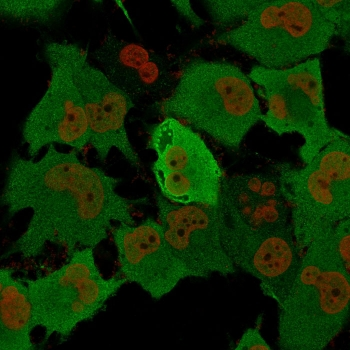
Immunofluorescent staining of permeabilized human T98G cells with recombinant PGP9.5 antibody cocktail (green, clone rUCHL1/775) and Nucspot (red).
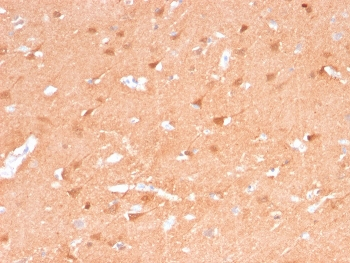
IHC staining of FFPE human cerebellum tissue with recombinant PGP9.5 antibody (clone rUCHL1/775). Required HIER: boil tissue sections in pH9 10mM Tris with 1mM EDTA for 10-20 min followed by cooling at RT for 20 min.

IHC staining of FFPE human pancreas tissue with recombinant PGP9.5 antibody (clone rUCHL1/775). Required HIER: boil tissue sections in pH9 10mM Tris with 1mM EDTA for 10-20 min followed by cooling at RT for 20 min.
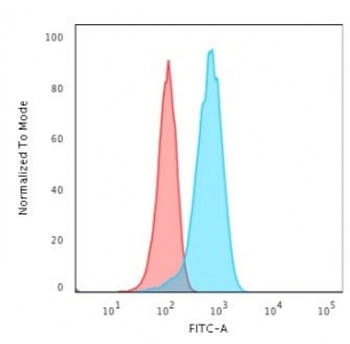
Flow cytometry testing of permeabilized human T98G cells with recombinant PGP9.5 antibody (clone rUCHL1/775); Red = isotype control, Blue = recombinant PGP9.5 antibody.
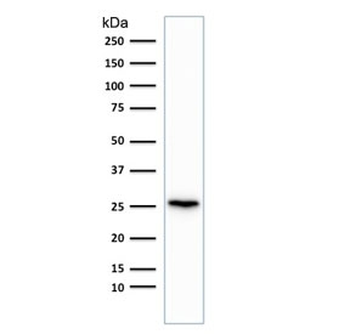
Western blot testing of human brain lysate with recombinant PGP9.5 antibody (clone rUCHL1/775). Predicted molecular weight ~25 kDa.
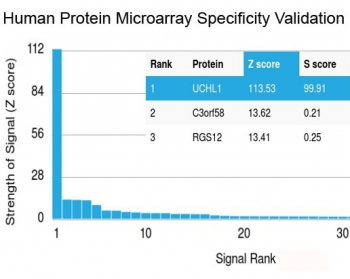
Analysis of HuProt (TM) microarray containing more than 19, 000 full-length human proteins using recombinant PGP9.5 antibody (clone rUCHL1/775). These results demonstrate the foremost specificity of the rUCHL1/775 mAb. Z- and S- score: The Z-score represents the strength of a signal that an antibody (in combination with a fluorescently-tagged anti-IgG secondary Ab) produces when binding to a particular protein on the HuProt (TM) array. Z-scores are described in units of standard deviations (SD's) above the mean value of all signals generated on that array. If the targets on the HuProt (TM) are arranged in descending order of the Z-score, the S-score is the difference (also in units of SD's) between the Z-scores. The S-score therefore represents the relative target specificity of an Ab to its intended target.

SDS-PAGE analysis of purified, BSA-free recombinant PGP9.5 antibody (clone rUCHL1/775) as confirmation of integrity and purity.
PGP9.5 / UchL1 Antibody [orb2640824]
FACS, IF, IHC-P, WB
Human, Rat
Mouse
Recombinant
Unconjugated
100 μgAnti-PGP9.5/UCHL1 Antibody [orb334572]
FC, ICC, IF, IHC, WB
Human, Mouse, Rat
Rabbit
Polyclonal
Unconjugated
10 μg, 100 μgPGP9.5 / UchL1 Antibody [orb749394]
FACS, IF, IHC-P, WB
Human, Mouse, Rat
Mouse
Monoclonal
Unconjugated
20 μgPGP9.5 / UchL1 Antibody [orb2637988]
FACS, IF, IHC-P, WB
Human, Mouse, Rat
Mouse
Monoclonal
Unconjugated
100 μg



